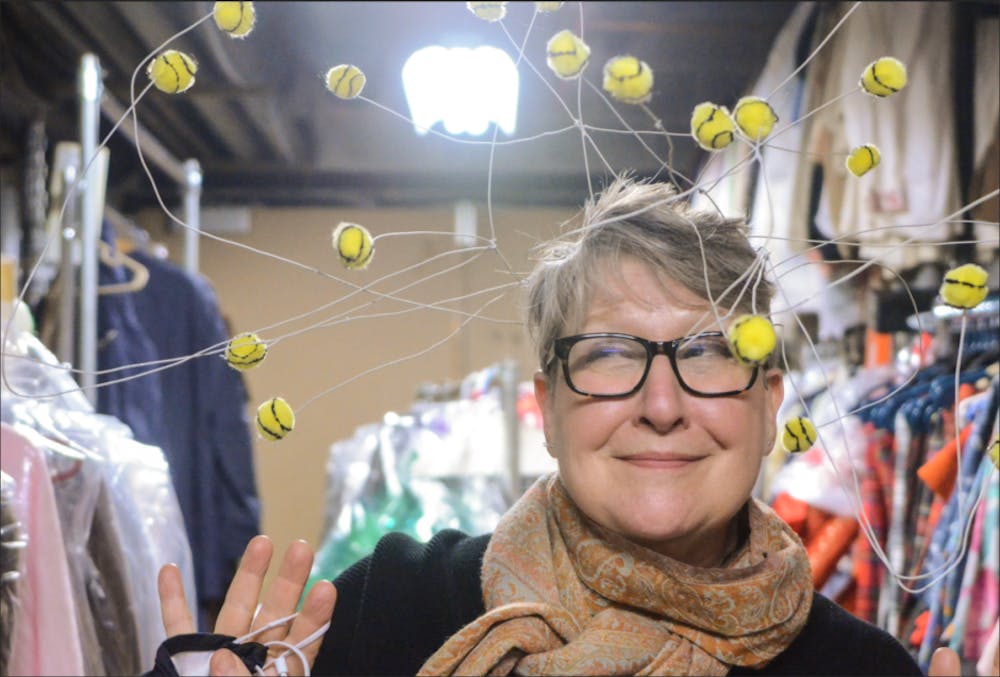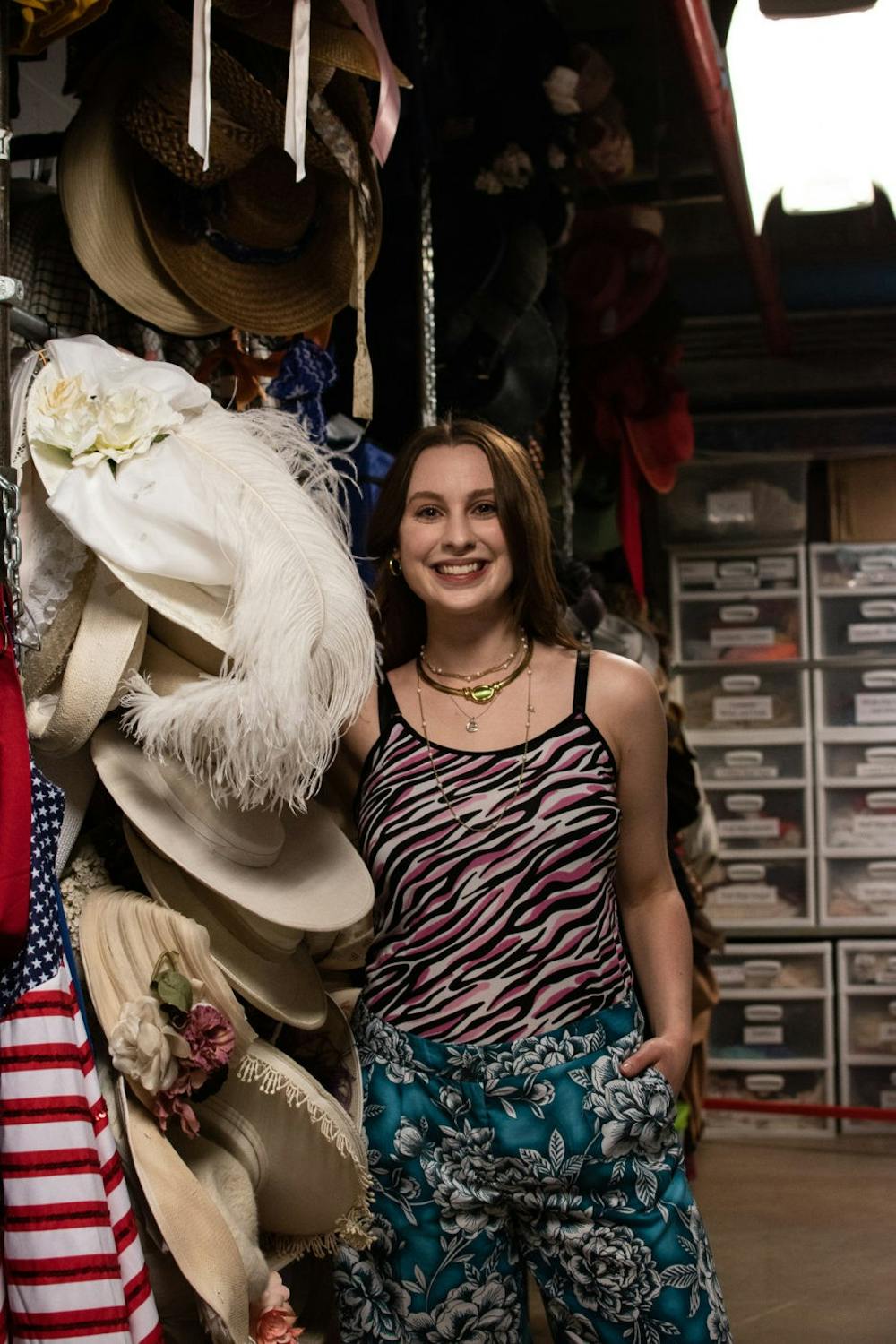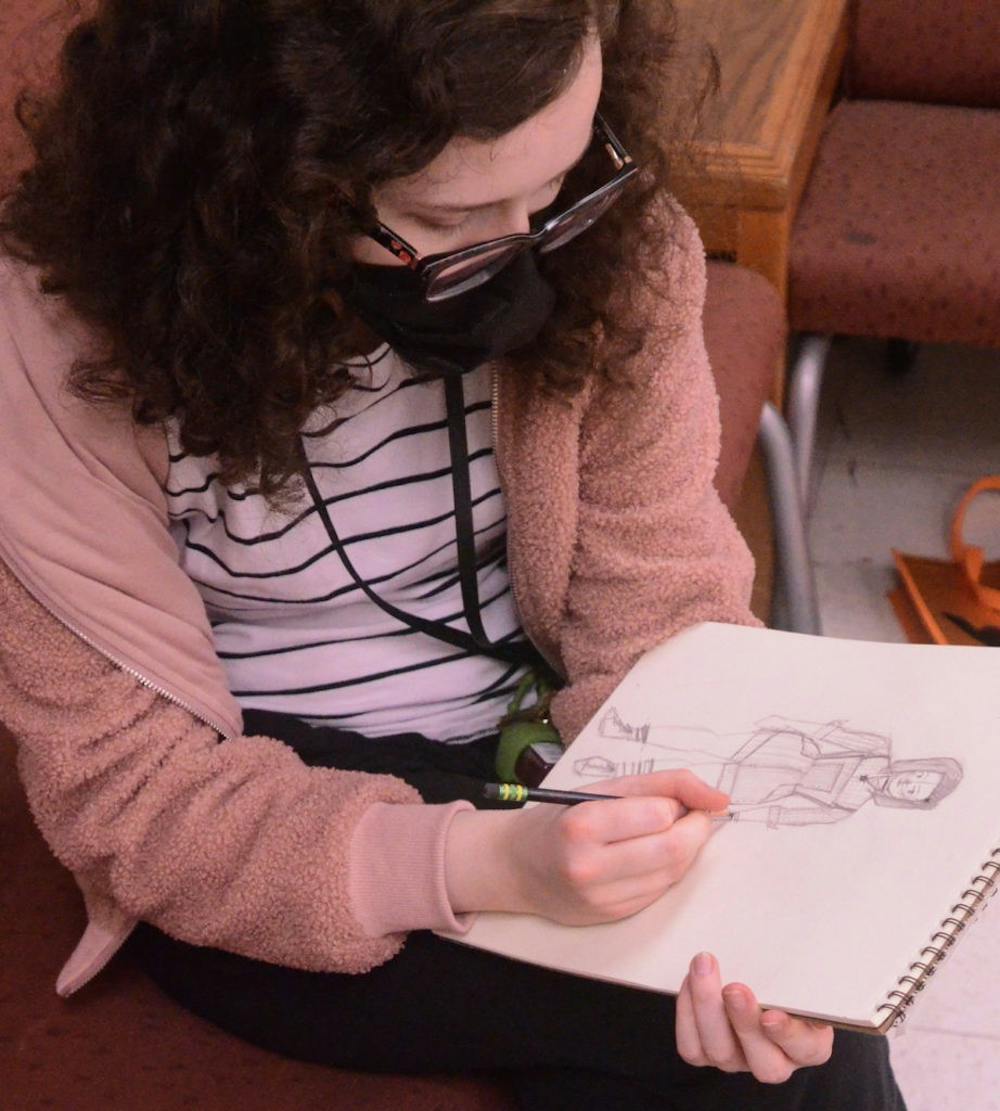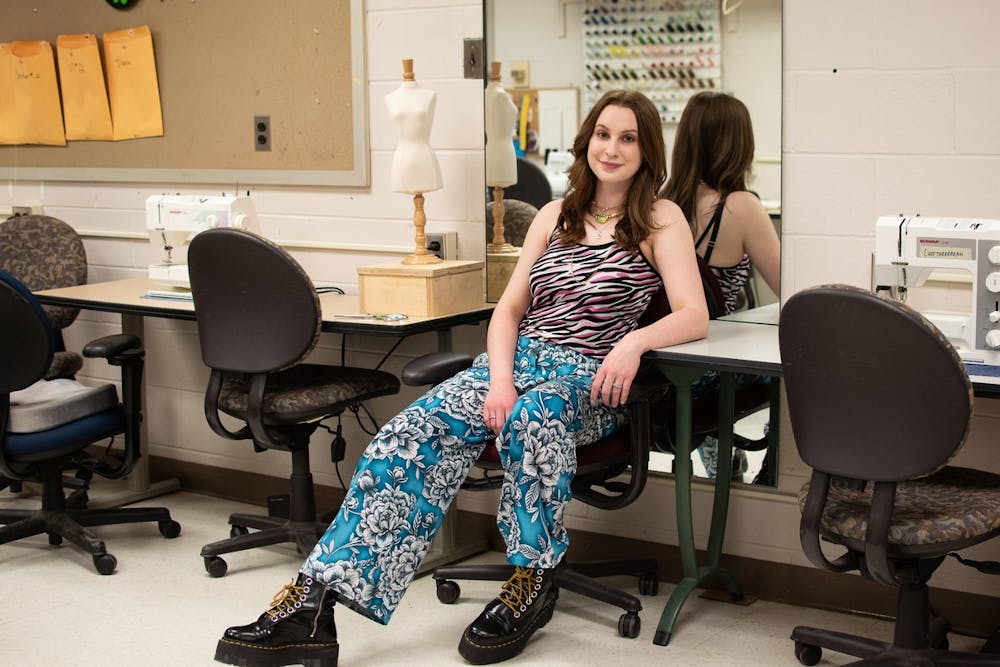Theater costumes can enhance a show by describing a character’s personality, their feelings, and the action that is taking place on stage. So what goes into making these magnificent costumes?
Former off-Broadway costume designer and current Ball State University professor Kathryn Rohe says there is a process.
According to Kathryn, costume designers read the script, listen to the directors and their ideas, and do research to gather imagery that might illustrate what they are trying to achieve. There is also sketching and painting, she says, and along the way, they are involving the directors and other designers.
“It is a communal exercise that none of us are creating on our own. We are creating together,” Kathryn says.
Kathryn has been working as a costume designer for 40 years. Originally wanting to be an actress, she knew in college it wasn’t turning out how she had planned.
Her costume design journey began when she took an introduction to costuming class. She fell in love with it, so she decided to stick with it.
“It is about fashion. It is about drawing and painting. It is about psychology. It is about history. It just combined such a broad range of interests and I thought it was super cool,” she says.

Kathryn’s mother taught her how to sew when she was around 10 years old. Most of the women in her family grew up learning how to sew.
“Back in my mom’s generation, that’s how you could acquire fashionable clothing that you might not be able to afford,” she says. “If you made it yourself, you could afford it.”
While at the University of Tennessee, Kathryn had a professor named Marianne Custer, who she considered a role model.
“In college, I wasn’t on a good path, and she really helped me,” Kathryn says. “If you can find that person, that role model, you are lucky enough to have that person in your college experience. It makes such a difference.”
Kathryn lived in New York 16 years prior to graduating from the University of Tennessee, where she worked as a wardrobe crew member for The Lion King on Broadway.
“It was so much fun,” she says. “I cannot even tell you how much fun it was.”
However, being a costume designer does come with its challenges.
“There are constantly production issues,” she says. “There is a garment that is not built the way it needs to be, or a cast member gets sick and they need to be replaced, or you know a dress needs to be ordered because you may not have the time to make it. It definitely can be a struggle.”
Kathryn was one of four deck dressers on The Lion King. As a deck dresser, she mostly worked in the dark where she added puppets to the costumes because the puppets were too big to put on in the dressing room.
The young Simba and Nala costumes were Kathryn’s main responsibility. She always made them try on shoes because they would almost always need a size up due to their unpredictable growth spurts.
One time, a young Simba was home for three days with the flu, and when he came back, his costume wouldn’t fit because he’d had a big growth spurt.
One of the most expensive and time consuming costumes of the production was for Rafiki. The costume required a headdress with a wig attached, a gigantic bag that acted as a kind of dress, special shoes, and it needed monkey hands as well. According to Kathryn, this costume would take three months for one person to make when they are avidly working on it and $20,000 to produce head-to-toe.
While working on The Lion King, Kathryn’s favorite costume was the cheetah and the cheetah puppet. She says the puppet works by attaching the cheetah head, which is out in front of the dancer. The head had wires from the ears to the wig that the dancer was wearing so when the dancer would move their head, the cheetah’s head would move with it.
“It was so beautiful, so magical, I get choked up even when I talk about it,” Kathryn says. “She became the creature. The animal came to light right before my eyes, and I thought that was amazing.”
In 2018, Kathryn took a job as a professor at Ball State. The first show she was a part of on campus was The Stage Door. The production is set in the late 30s and required about 90 costumes. She says it was a blast inventing costumes and having fun making something grand out of nothing.
Kathryn loves helping shape the imagery to help tell the story. Her mother always used to say, “it is good for the soul.”
“There is a connection between the audience and performer. Good theatre is transformative. It takes you out of yourself and into the realism of ideas and spirit. It is so uplifting,” Kathryn says. “Unfortunately, we live in a culture that doesn’t always recognize the necessity of parts to our soul because they don’t always see it as a moneymaker. It is very unfortunate.”
One of Kathryn’s students at Ball State, Emily Coy, is a junior pursuing a degree in Costume Design and Technology. Her favorite thing about being a costume designer is being able to bring a character to life.
“I think it is really fun not only to help create a character, but to see the final product at the end, especially when you have gone through the whole process and you can enjoy it,” she says. “You’re like, ‘oh my gosh, this character is real right now. Not only the costumes, but everything as a whole.’”
Emily did backstage quick changes in high school, but really started costume designing when she began studying at Ball State. She knew right off the bat she wanted to pursue costume designing as a career.

According to Emily, the biggest challenge she has faced so far is the coronavirus pandemic. Last semester, she designed a show that was held completely over Zoom called, She Kills Monsters: Virtual Realms.
For that production, she didn’t have any physical contact with the characters. They just sent in pictures of what they had in their closet and their measurements.
“It was kind of a fun challenge and it was another way to collaborate with them,” Emily says. “I probably wouldn’t have had this much collaboration before.
“It was really fun because a lot of the characters have normal Midwestern school clothes and then they also have their fantasy character clothes. Thankfully the costume shop is really good at getting measurements right at the beginning of the semester when everybody gets cast.”
After graduating, Emily has numerous ideas of what she is interested in pursuing as a career.
“I think it would be fun to be a dresser for a traveling show like on a tour or work as a dresser on SNL,” she says. “I am also interested in possibly being a dresser for TV and film, like the styling/fashion route. But I’ll probably just start out in theater.”
Another one of Kathryn’s students is freshman Jillian Fleck. This is her first year as a costume designer. She originally wanted to be a character designer for animation but was having a hard time trying to find a program that she fit with.
“I was looking at Ball State just for general college stuff, and it clicked to try costume design,” she says. “Sewing has always been a huge passion of mine ever since I was really little. I thought, ‘well this makes perfect sense.’”
Over the years, Jillian has made Halloween costumes for her siblings. Along with having an aunt whom she goes to for help, she relies on YouTube videos to master her skill.
“If I can’t find the pattern I want, I am more than willing to make it myself out of duct tape and plastic wrap, which is fun,” she says.
Jillian has also noticed the many obstacles that the COVID-19 pandemic has created for theater performances, especially for costumes.

“Obviously the main issue right now is the pandemic, and we haven’t been able to actually go out and buy clothes for the costumes,” Jillian says. “We have been having the actors pull from their own closets to match up with the vision of the costume the designers and the director have.”
One of Jillian’s favorite things about designing costumes is that she is constantly interested in what she is working on. She likes that costuming has some sort of analysis and problem solving in it to keep her brain engaged.
“It is so interesting when you have to take budgeting into account. I am sure there is this very expensive thermal plastic that you could use to create this mask. So then I ask myself, ‘okay, how am I going to make this with clay and some aluminum foil?’”
After graduating, Jillian doesn’t see herself working on Broadway.
“I like working on a little bit of a smaller scale like on the community theatre aspect of things. Even going to Disney and creating costumes for the characters on the various attractions,” she says.
So far, Jillian says she has had a really great experience at Ball State and says the university has an excellent program with a lot of really great professors and staff.
“Artists need to carry on. They need to carry on to the best of their abilities. We have been engaging in theater and arts for hundreds of thousands of years. It is a necessary part of who we are,” Kathryn says.





